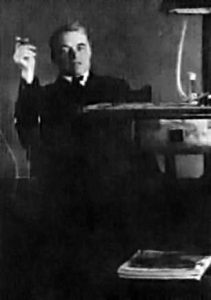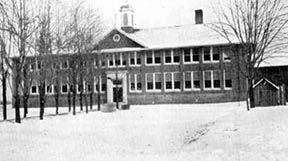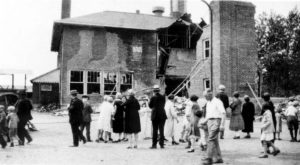The number of victims in the terrible Las Vegas rampage stands at 58 killed and over 500 wounded. Investigation into this horrendous massacre continues while the nation ponders the motives and purpose of the killer, one Stephen Paddock, 64, who put a bullet into his brain as police broke into his barricaded hotel room. An arsenal of weapons was found there, as well as in his home where police also discovered bomb-making material. Paddock’s plans or his ultimate goal are currently unknown. He seems to fall into that unique category of killers who have no criminal history, appear outwardly “normal” and fail to draw attention to themselves prior to their crimes. These are probably some of the most difficult cases that investigators face because the reasons for what they do can often seem trivial and far out of proportion to their crimes. What motivates people to kill innocent strangers? How can they be consumed by so much hatred?
During the 1990s, when I wrote for Court TV’s Crime Library, I researched dozens of high profile murder cases such as the mass murder of all the passengers on a commercial airliner out of Denver in 1955, the Birmingham church bombing in 1963, and the Happy Land fire in the Bronx in 1990, to name a few. But one of the most tragic crimes in the annals of criminal justice was the mass murder of dozens of school children in a small community with the unlikely name of Bath, Michigan in 1927.
His name was Andrew Kehoe, a 55-year-old farmer who was also the custodian of the Bath Consolidated School. Kehoe was a stern and secretive man; married to a local woman named Nellie and lived on a 185 acre farm a short distance from the town. Because the local school system during that era consisted of many small schools, politicians decided they would build one structure, the Bath Consolidated School, where all local students could attend. The school was built and property taxes were raised, much to the anger and ire of Kehoe. He claimed the increase was a burden and that he couldn’t pay his mortgage. To make financial matters worse, his wife, Nellie, became desperately ill. By 1927 he faced bankruptcy and possible loss of his farm. Though he fought with the school board continuously over the tax increase, he kept his job as custodian of the school. But unknown to anyone, he seethed with a hatred for the school board and blamed them for all his financial problems.

Andrew Kehoe
During the spring of 1927, Kehoe began to purchase dynamite from local hardware store. He told the clerks that he was clearing some of his land. When he went to work, he brought the dynamite with him and planted sticks of the explosive throughout the nooks and crannies of the school building. He put nails, screws and bits of jagged metal inside each bomb so it could inflict maximum damage. He also placed gallons of gasoline inside the rafters and floors of the school. On his property, he cut down all the trees but left them in place so no one would immediately notice what he had done. He then wired up his farm with explosives while his bed-ridden wife probably knew nothing of his evil plan. He chained his horses and cows to their stalls so they couldn’t run away. Their charred bodies were later found by police in ashen heaps, still chained up inside the barn. Then he hand-painted a sign and pounded it into the ground in his front yard. The sign read, “Criminals are made, not born.” On the morning of May 18, 1927, the carnage began.

Bath Consolidated School
At 8:45 a.m., Kehoe detonated the bombs on his farm. He had already murdered Nellie by bashing her skull with an unknown object and dumped her body into a wheelbarrow. The farm exploded into a giant fireball, engulfing every structure on the property. Kehoe loaded his pickup truck with more dynamite, junk metal and rusted car parts. He raced over to the school where the students had already begun their classes. Within minutes, the Bath Consolidated school erupted into a titanic explosion that was heard twenty miles away. Kehoe had planted over 1,000 pounds of dynamite there. One teacher later told the press, “I saw the bodies of my children hurled against the walls or thrown through the windows.” The entire town rushed to the school and began to dig through the rubble. The screams of children could be heard under the debris as frantic mothers fought with rescuers to reach the trapped victims. Pieces of bodies were strewn in the bushes and trees and many relatives of the children fainted or became hysterical.
Minutes later, Kehoe drove up in his bomb-truck. He sought out the school superintendent, Emory Huyck, and called him over to his car. Kehoe then pulled out a rifle and fired a shot into the dynamite on the back seat. Another explosion ripped through the site. Metal debris flew everywhere, killing and injuring even more people as they ran screaming from the school grounds. Kehoe was obliterated. So was Huyck. In all, 45 children and teachers were killed and 61 others injured. Luckily, one of Kehoe’s bombs failed to detonate. Over 500 pounds of additional explosives were later found in the school.

Bath School after disaster
Like Kehoe, Paddock’s purpose in mass murder may exist exclusively in his own mind. Only time will tell. Maybe something will be discovered in Paddock’s life that will reveal his plans and what, if anything, he hoped to accomplish. Maybe his motivation will become clear, though it doesn’t seem likely. Killers like Paddock and Kehoe create incredible chaos and destruction while the police struggle mightily trying to figure out why the hell they did it. Was it insanity? Revenge of some sort? Or is it a form of evil that is beyond the understanding of any of us?
Way back in 1911, the great Józef Teodor Konrad Korzeniowski, better known as Joseph Conrad, wrote in Under Western Eyes: “The belief in a supernatural source of evil is not necessary; men alone are quite capable of every wickedness.” Ninety years separate the massacres in Bath and Las Vegas, but Kehoe and Paddock share a kind of evil that is both terrifying and real. In the coming weeks, maybe some of the many questions about this shocking event will finally be answered.
 Dan says
Dan says
January 1, 2023 at 11:34 pmI don’t see how these crimes are comparable.
You laid out Kehoe’s motives, although I have no comprehension of his tying up and killing the animals. That’s gratuitous cruelty.
Paddock: What motivated him? Kehoe was motivated by revenge for his life being ruined by those kids and his raised taxes (in his mind).
Who did Paddock blame for what?